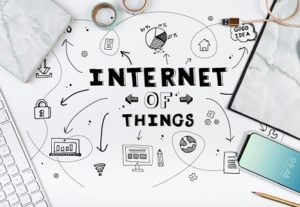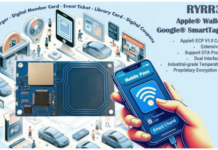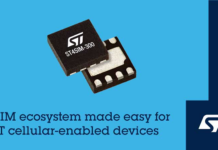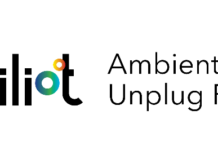
IoT has introduced some serious changes in numerous spheres of our everyday lives. From professional to personal improvement, IoT continues to help us improve, progress, and reach our goals. The same goes for education since IoT has found its way into the classrooms all over the world. Now, it’s making an impact on student learning.
IoT creates a classroom full of opportunities for both the students and the teacher. The collaboration and connectedness are lifted to a whole new level. If you’re not sure how IoT is impacting student learning, and you want to know, just keep reading.
Let’s take a closer look together.
1. Repetitious Tasks
The students we have in the classrooms today are digital natives. Technology comes to them naturally, and they use their smartphones to improve productivity in a series of everyday tasks.
In an IoT classroom, students can use their devices to speed up the process of doing repetitive secondary tasks and focus more o the actual learning.
Here’s what they can do:
- take notes faster on an electronic device
- do online research on the spot
- track their school schedule
- receive lesson materials instead of copying them
- stay connected to each other and the teacher
So, instead of having to wait for the teacher to hand out the lesson materials, you’ll have it on your electronic device with just one click.
An IoT classroom saves everyone a lot of time and leaves more room for going through the lesson, communicating with the teacher, and dong actual learning.
2. Interactive Lessons
Think about the way students used to learn before the rise of technology. They’d sit in their chairs, with their books open, and listen to what the teacher is saying.
There was very little interaction, and most technology they used in the classroom was watching a documentary on classroom TV.
Today, thanks to IoT, lessons can be far more interesting and engaging. Teachers use things such as:
- interactive smart boards
- smartpens
- virtual reality
- speakers and projectors
Students can get their hands engaged and actively participate in the creation of the lesson. The students who aren’t at the board can follow everything on their devices and save the lesson to revise later.
IoT helps the students become more involved in the lessons and retain more knowledge from a single lesson.
3. Setting Your Pace
In a classroom full of students, it’s impossible to make the pace and intensity of the lesson fit everyone. Each student has their own needs and preferences, which is why schools are aiming to create a more personalized learning experience.
With IoT, students can set their own pace and learn according to their needs.
Here’s how:
- teachers create online platforms to keep all class information in one place
- students have access to this platform
- there are learning materials, homework tasks, and the latest lessons
- at home, students can access these materials and create their own educational experience
Thanks to IoT, school materials are brought home, and students have the chance to catch up on what they’ve missed, or study harder to keep up with others.
4. Customized Lessons
Teachers are facing a paradigm shift in the way they teach and deliver lessons. IoT has made it possible for them to understand each group of students better and track their progress as a group.
A connected classroom allows the teachers to gather valuable data on their students in real-time.
Teachers can track things such as:
- students attention
- their participation
- their progress with the learning materials
- their understanding of the lesson
And, with each class being different and having students of different learning tendencies, teachers have the opportunity to customize the lessons for each class.
They can:
- choose to add or remove certain parts of the lesson
- make the lesson more or less interactive
- chose to readdress certain parts of the lesson
- help the students reach their maximum
When the teachers have the opportunity to understand their students better, their lessons can be improved to fit the needs of those groups of students.
5. Individual Approach
In a cloud-based classroom, the teacher tracks how the students are doing. They can check every single student quickly and easily.
Once the teacher assesses the situation, they can:
- offer individual counseling
- give additional tasks to those who are ahead of others
- help out those who are staying behind
- address particular issues students encounter
IoT allows for a more individualized, personal approach, and better communication between the teacher and individual students.
6. Textbooks &Materials
In the early days, all the students had was a textbook and workbook. If there was some additional information we needed, students would head to a library to do some more research in the books they could find there.
Today we have a whole different situation:
- textbooks are in digital form
- they come with audio, videos, visuals
- they come with interactive activities and tests
- libraries are digitalized
- students can access digital books, articles, and publications from their devices
Even outside the classroom, students have the chance to improve their learning process.
With all the information on the palm of their hands, students can make the process of learning and studying much more comfortable and successful.
7. Remote Learning
IoT is breaking the boundaries and opening so many new doors to students all over the globe.
Today, you don’t necessarily have to travel or move to another state just to attend the school you want. For students with disabilities, low family income, or those who live in remote areas, this can be life-changing.
IoT can bring the classroom to you wherever you are.
That means that students can:
- expand their options
- grab more opportunities
- encounter fewer boundaries
Education is becoming more available and easier to access, which is shifting the perspective of so many students.
Final Thoughts
IoT has made quite an impact on the way students learn, experience school, and acquire knowledge. Thanks to IoT, students have more options and are far more engaged in the process of learning.
The examples listed above are just the tip of the iceberg. Hopefully, they’ll inspire you to explore and experiment more, and improve your personal learning experience.
Article by:-
Marques Coleman is a freelance writer and a blogger who aims to deliver fresh, trending, and valuable information. He currently works as a writer at EssayAssistant and Best Essays Education. Marques is also an editor at Supreme Dissertations. He covers topics ranging from IoT to professional development.


















